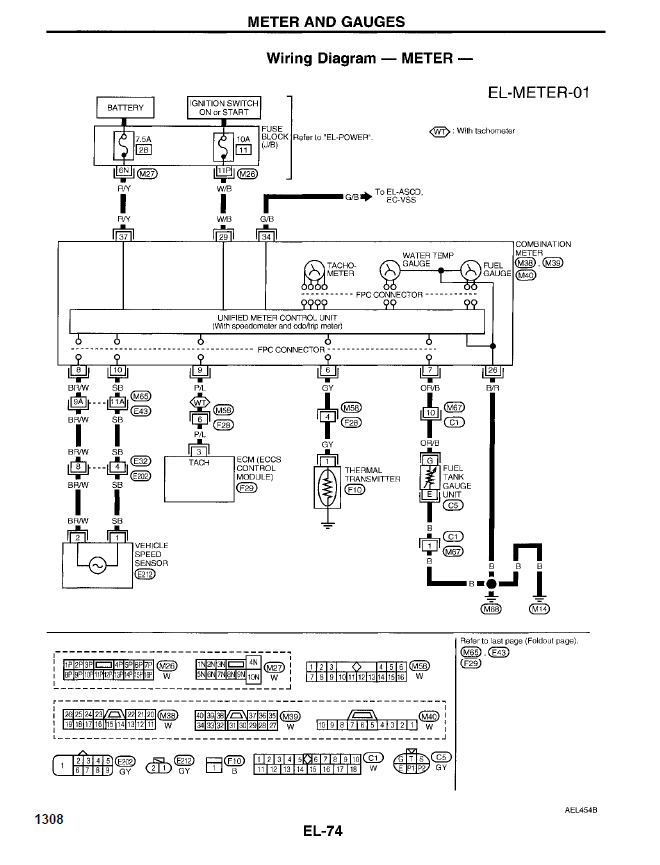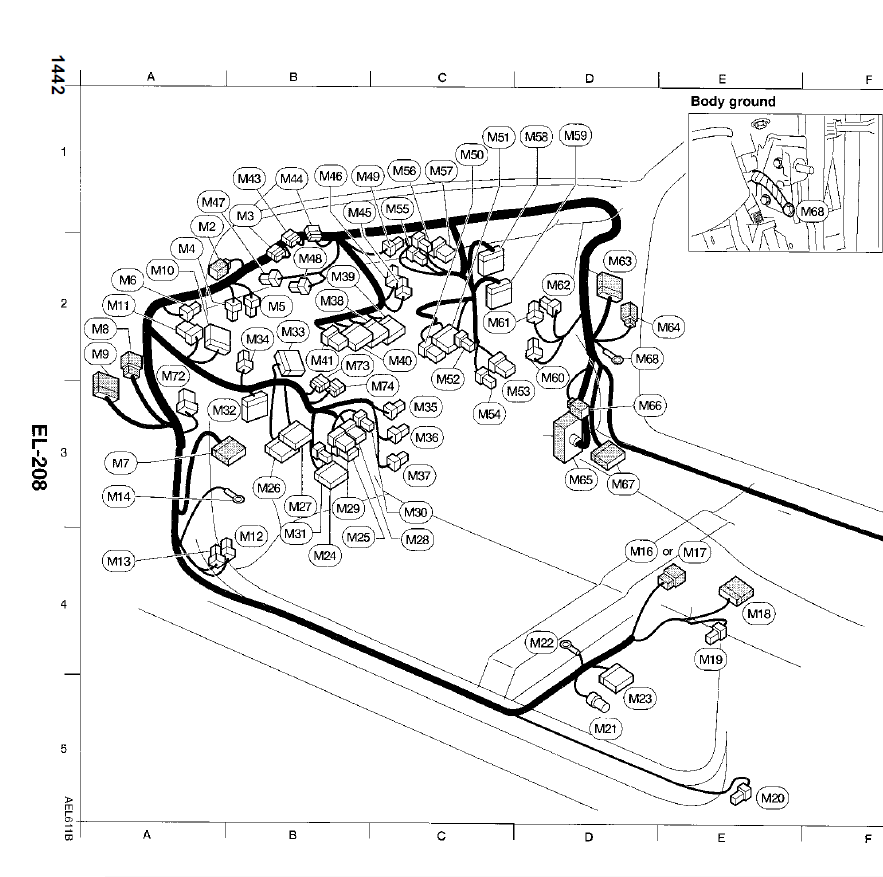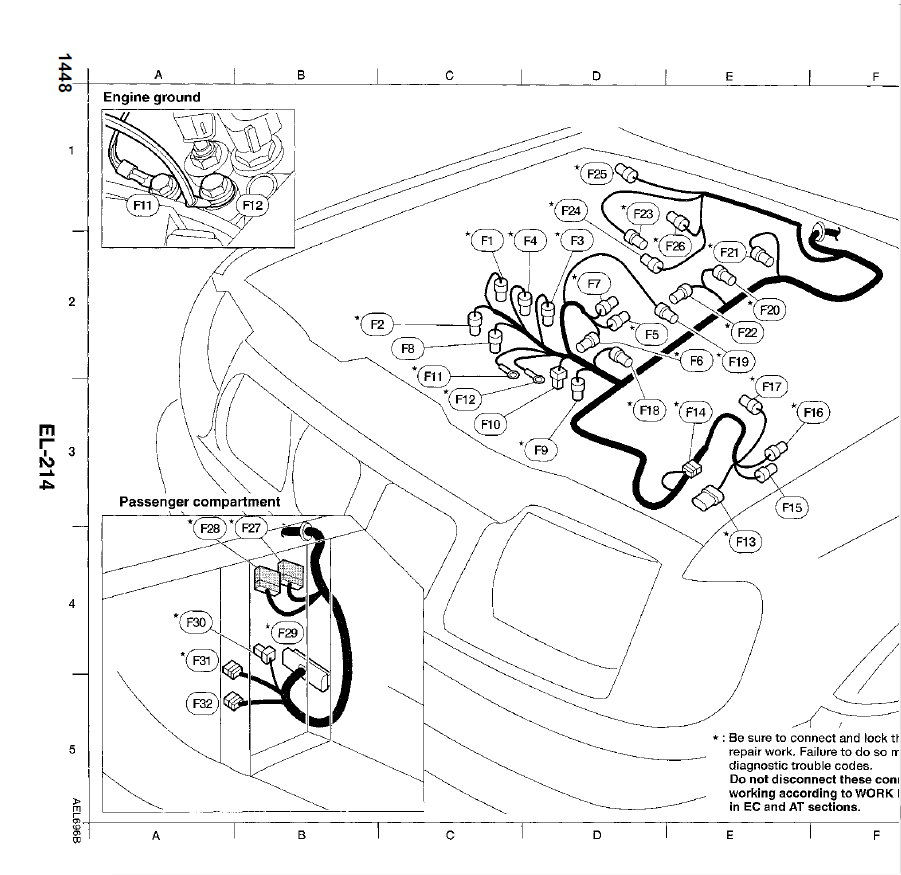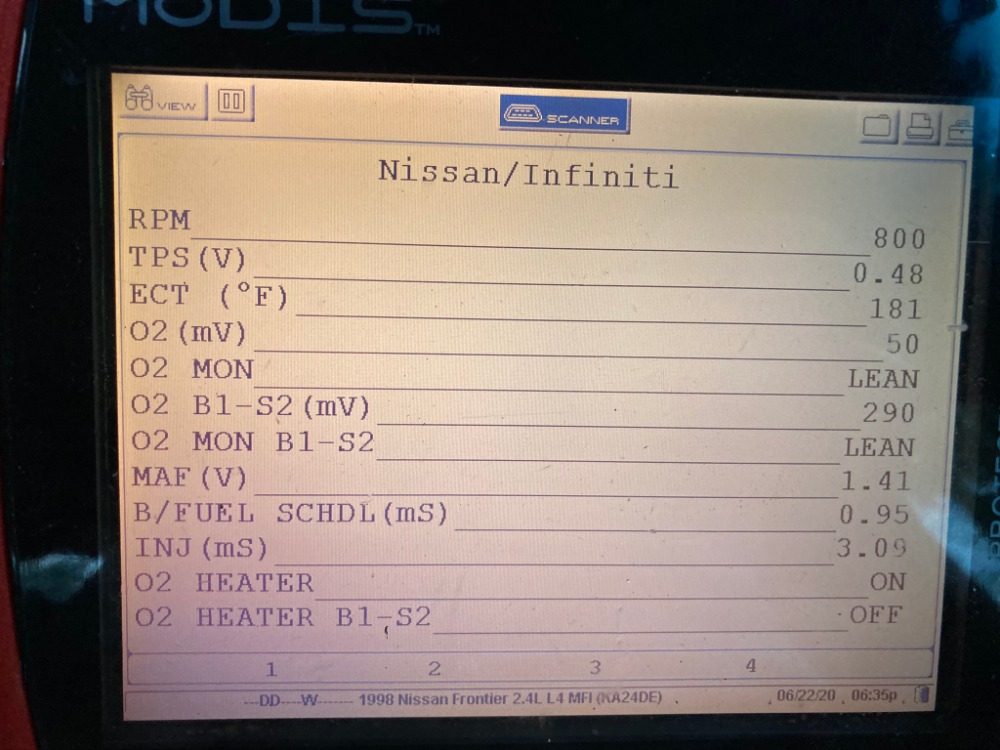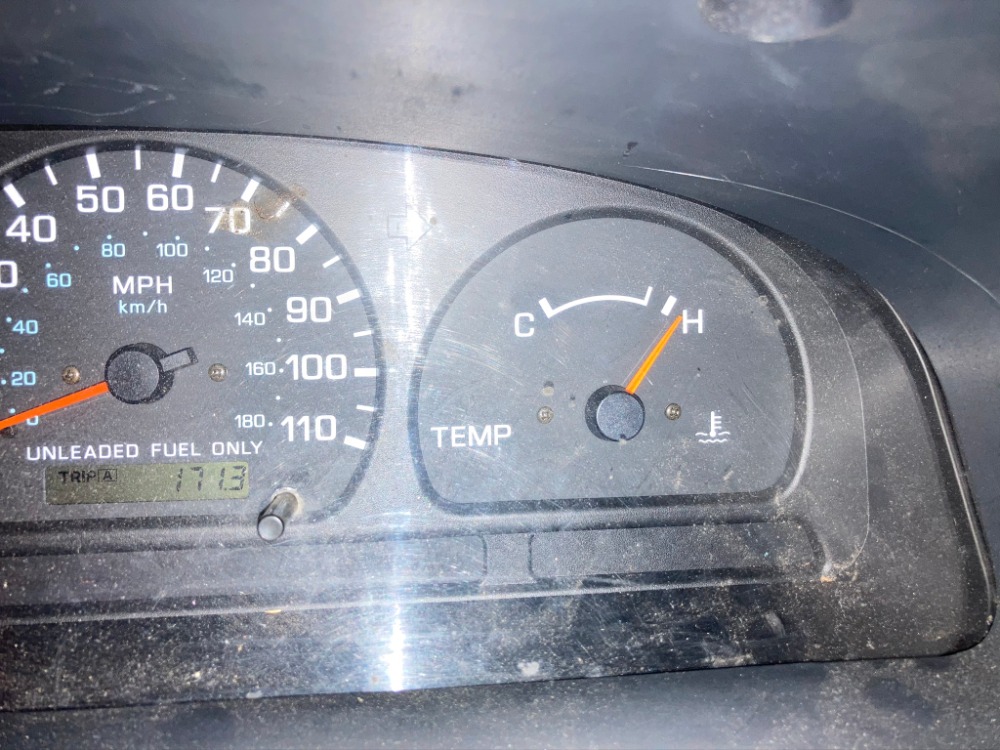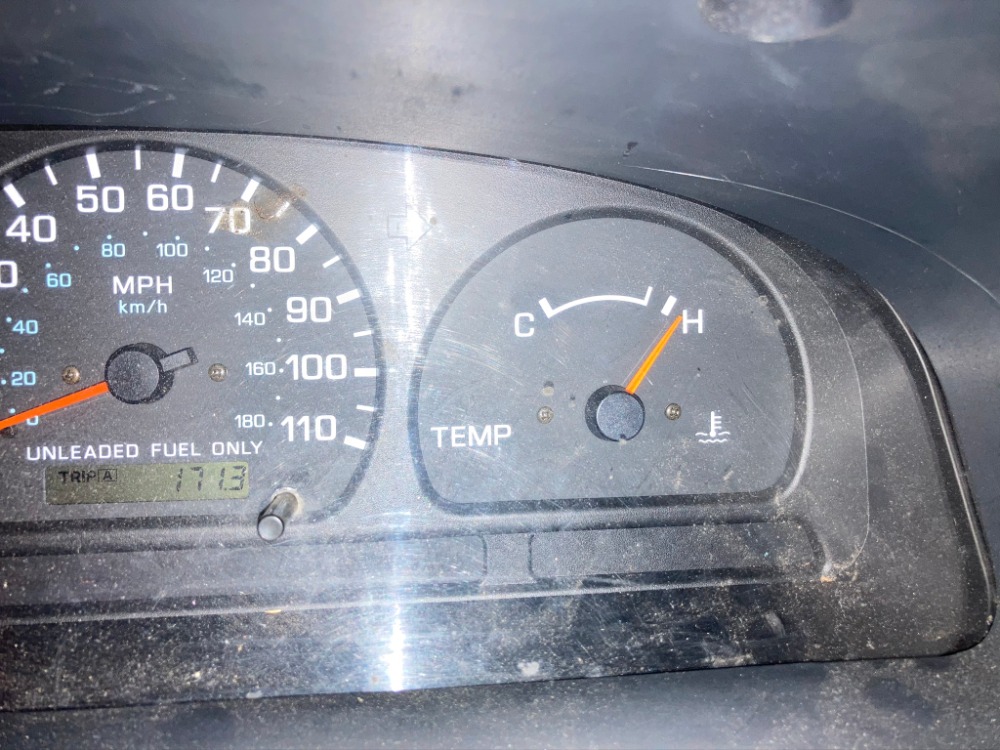[Fixed!] 1998 Nissan Frontier with KA24DE -- Temp Gauge
- JimT
-
Topic Author
- Offline
- Junior Member
-

- Posts: 29
- Thank you received: 2
Please Log in or Create an account to join the conversation.
- John Clark
-
- Offline
- Premium Member
-

- Posts: 139
- Thank you received: 46
it would be helpful to use a scan tool to watch the coolant temp that is being sent to the PCM during your drives and compare to what the gauge is telling you.
Please Log in or Create an account to join the conversation.
- JimT
-
Topic Author
- Offline
- Junior Member
-

- Posts: 29
- Thank you received: 2
I back out of the driveway into the street. At that time, the gauge pegs hot. Great! That's what I need! I pop the hood and jump out and disconnect the gauge. Gauge goes cold when disconnected. Oops. Not what I was expecting. Plug it back in, gauge goes hot. Dang. Pull back in driveway and run to get my meter to ohm the sensor, but then it went back to normal. Crud. But, the evidence suggests that my gauge may actually be functioning. Kind of embarassing.
I like the scan tool idea. I have a friend with a scan tool and I'm going to try it. It's a snapon Modis. We tried it a while back and it said it could not communicate with the truck. But, it will read in generic obd mode. I don't know why that is. I'll see if it can read the sensors in generic mode. Thanks for the idea.
Please Log in or Create an account to join the conversation.
- John Clark
-
- Offline
- Premium Member
-

- Posts: 139
- Thank you received: 46
At this point it appears that either the sensor is bad or there is something going on inside the manifold that is causing the sensor to indicate full hot, or short out.
I suggest getting a good quality replacement, either OE or Wells (WVE.) A little known secret is that Autozon's Duralast brand is often Wells reboxed under the Duralast name. Those are the only electrical parts I'll buy at the parts stores.
As for the scan tool, any OBDII scan tool that supports live data should be able to see the coolant temp. The reason you couldn't get the Modis to talk with the vehicle is that you likely were connected to the normal 16pin OBDII DLC. There is another diagnostic port, usually found under the dash or in the fuse box. It takes a proprietary Nissan connector but the Modis should talk to it if he has the Nissan connector for it. I have to use this on my 98 200SX. In the early days of OBDII they were still using their proprietary diagnostic connectors in addition to the OBDII.
Please Log in or Create an account to join the conversation.
- JimT
-
Topic Author
- Offline
- Junior Member
-

- Posts: 29
- Thank you received: 2
Good information about the extra diagnostic port. I have seen something similar on a 1999 BMW. Something about the changeover from OBD1 to OBD2. I'll look into it. We were connected at the 16 pin "regular" DLC, so I'll look for the other one. I doubt he has the connector for it, though, but I'll check.
Please Log in or Create an account to join the conversation.
- John Clark
-
- Offline
- Premium Member
-

- Posts: 139
- Thank you received: 46
Please Log in or Create an account to join the conversation.
- John Clark
-
- Offline
- Premium Member
-

- Posts: 139
- Thank you received: 46
I would also like to measure the voltage on the sensor wire while it's acting up, as well, and compare it to when it's working normally.
Please Log in or Create an account to join the conversation.
- Andy.MacFadyen
-

- Offline
- Moderator
-

- Posts: 3353
- Thank you received: 1036
" We're trying to plug a hole in the universe, what are you doing ?. "
(Walter Bishop Fringe TV show)
Please Log in or Create an account to join the conversation.
- John Clark
-
- Offline
- Premium Member
-

- Posts: 139
- Thank you received: 46
I was thinking possibly a short near or in the cluster but that wouldn't explain why when it happens he can unplug the sensor and it goes full cold.
Possibly a bad power or ground to the gauge but I would think that would affect the other gauges since they share power and ground.
I'm thinking chafed wire somewhere that's shorting and moves when the connector is pulled off.
Please Log in or Create an account to join the conversation.
- Matt T
-
- Offline
- Platinum Member
-

- Posts: 751
- Thank you received: 276
I'm guessing this gauge is a simple voltage divider circuit with R1 in the cluster and R2 being the temp sensor, with the gauge measuring the voltage between R1 and R2. So the less likely, but does fit the symptoms, cause is an intermittent high resistance on the R1 side. When R1 increases R2 will pull the voltage down and when R2 is unplugged the gauge sees full voltage. If that is what's happening I can't think of an easy way to diag it conclusively....
Please Log in or Create an account to join the conversation.
- John Clark
-
- Offline
- Premium Member
-

- Posts: 139
- Thank you received: 46
Please Log in or Create an account to join the conversation.
- John Clark
-
- Offline
- Premium Member
-

- Posts: 139
- Thank you received: 46
Please Log in or Create an account to join the conversation.
- John Clark
-
- Offline
- Premium Member
-

- Posts: 139
- Thank you received: 46
Matt T wrote: ... So the less likely, but does fit the symptoms, cause is an intermittent high resistance on the R1 side. When R1 increases R2 will pull the voltage down and when R2 is unplugged the gauge sees full voltage. If that is what's happening I can't think of an easy way to diag it conclusively....
Assuming this is the issue, it would be in the gauge cluster. Some tapping on the gauge cluster might help. A few posts back, I suggested taking a voltage measurement at the sensor connector but I suggested taking it unplugged which probably wouldn't yield any results (no current flow, no voltage drop across R1.) Would it help to take a voltage measurement at the sensor connector while plugged in and compare during failure and during normal operation?
You might be able to find a used cluster and plug it in and see if the symptoms change.
Please Log in or Create an account to join the conversation.
- John Clark
-
- Offline
- Premium Member
-

- Posts: 139
- Thank you received: 46
Please Log in or Create an account to join the conversation.
- Matt T
-
- Offline
- Platinum Member
-

- Posts: 751
- Thank you received: 276
John Clark wrote: Assuming this is the issue, it would be in the gauge cluster. Some tapping on the gauge cluster might help. A few posts back, I suggested taking a voltage measurement at the sensor connector but I suggested taking it unplugged which probably wouldn't yield any results (no current flow, no voltage drop across R1.) Would it help to take a voltage measurement at the sensor connector while plugged in and compare during failure and during normal operation?
Agreed on testing voltage unplugged. Not near enough current flow with a 10 meg ohm DMM. Testing voltage with a fairly high resistance to ground might work. Would need to experiment to find a resistor which draws just enough current to pull the voltage down slightly. Then test when the fault appears to see if the resistor pulls the voltage lower than normal. Or if the OP has a DMM with a low impedance mode that might be enough to load the circuit.
Please Log in or Create an account to join the conversation.
- JimT
-
Topic Author
- Offline
- Junior Member
-

- Posts: 29
- Thank you received: 2
I had seized on the idea of using the scan tool to read the other sensor (the one the ECU uses) to compare the two, hence my silence lately. The two sensors are right next to each other, so in theory they should read the same temperature. After you guys showed me where the proprietary connector was, I thought "Wow. Been there the whole time and I never knew it." The Nissan 2 adapter needed to connect was on backorder, so I'm waiting for that to show up. Once I can talk to the other sensor, I'll report back in. Thanks again, folks. This issue is not the end of the world, I just want to solve the riddle, whether it's the sensor, wire, gauge, or if it's actually getting hot!
Please Log in or Create an account to join the conversation.
- Hardtopdr2
-
- Offline
- Platinum Member
-

- Posts: 849
- Thank you received: 148
Just a thought
Please Log in or Create an account to join the conversation.
- JimT
-
Topic Author
- Offline
- Junior Member
-

- Posts: 29
- Thank you received: 2
Please Log in or Create an account to join the conversation.
- JimT
-
Topic Author
- Offline
- Junior Member
-

- Posts: 29
- Thank you received: 2
It's the gauge, right? That makes sense, but here's what I don't understand... while the gauge read hot, I ohmed that sensor. It read 47 ohms. That is low resistance and a reading that I would expect the gauge to register as hot. Why is the sensor reading such a value? I check the resistance by putting the positive lead on the sensor and the negative lead on the battery negative.
Pics of the scan tool and gauge are below.
Please Log in or Create an account to join the conversation.
- JimT
-
Topic Author
- Offline
- Junior Member
-

- Posts: 29
- Thank you received: 2
Please Log in or Create an account to join the conversation.

